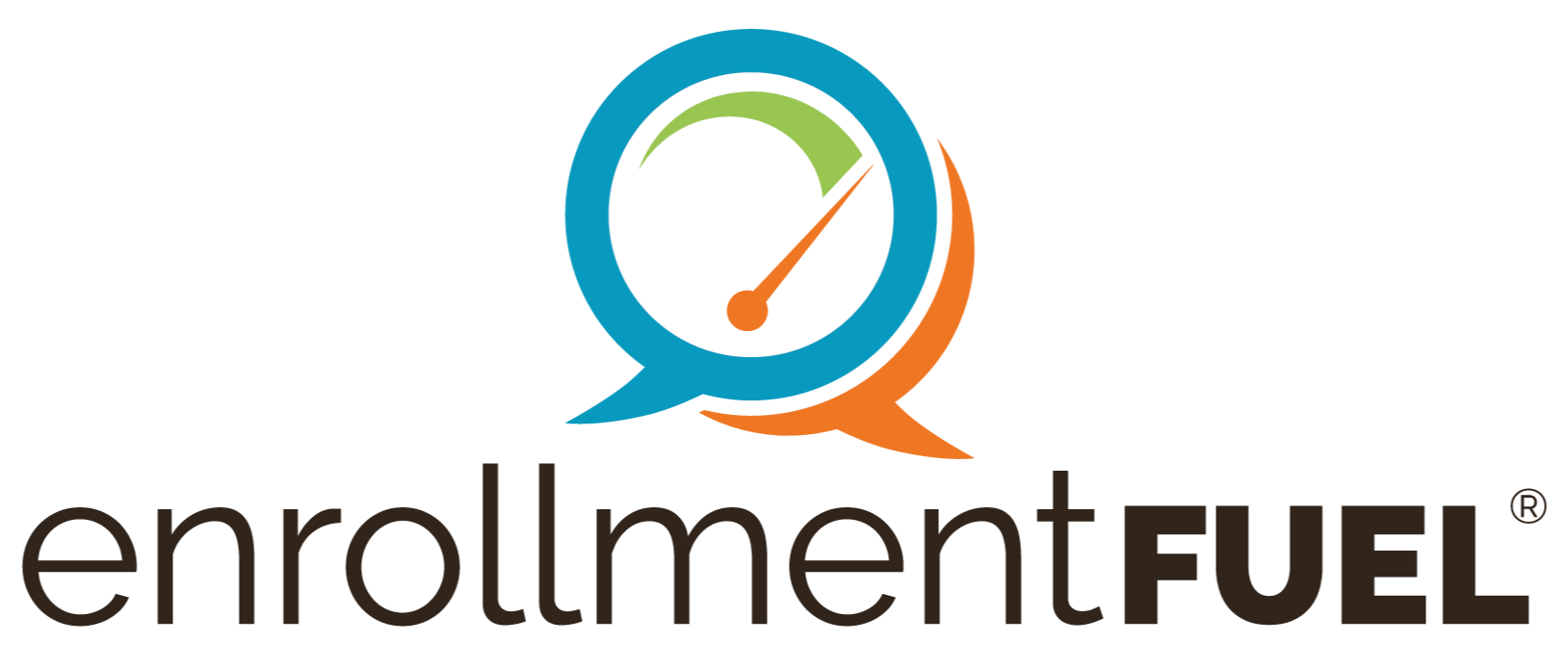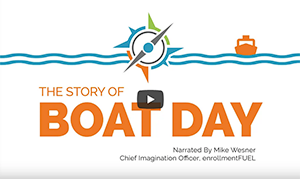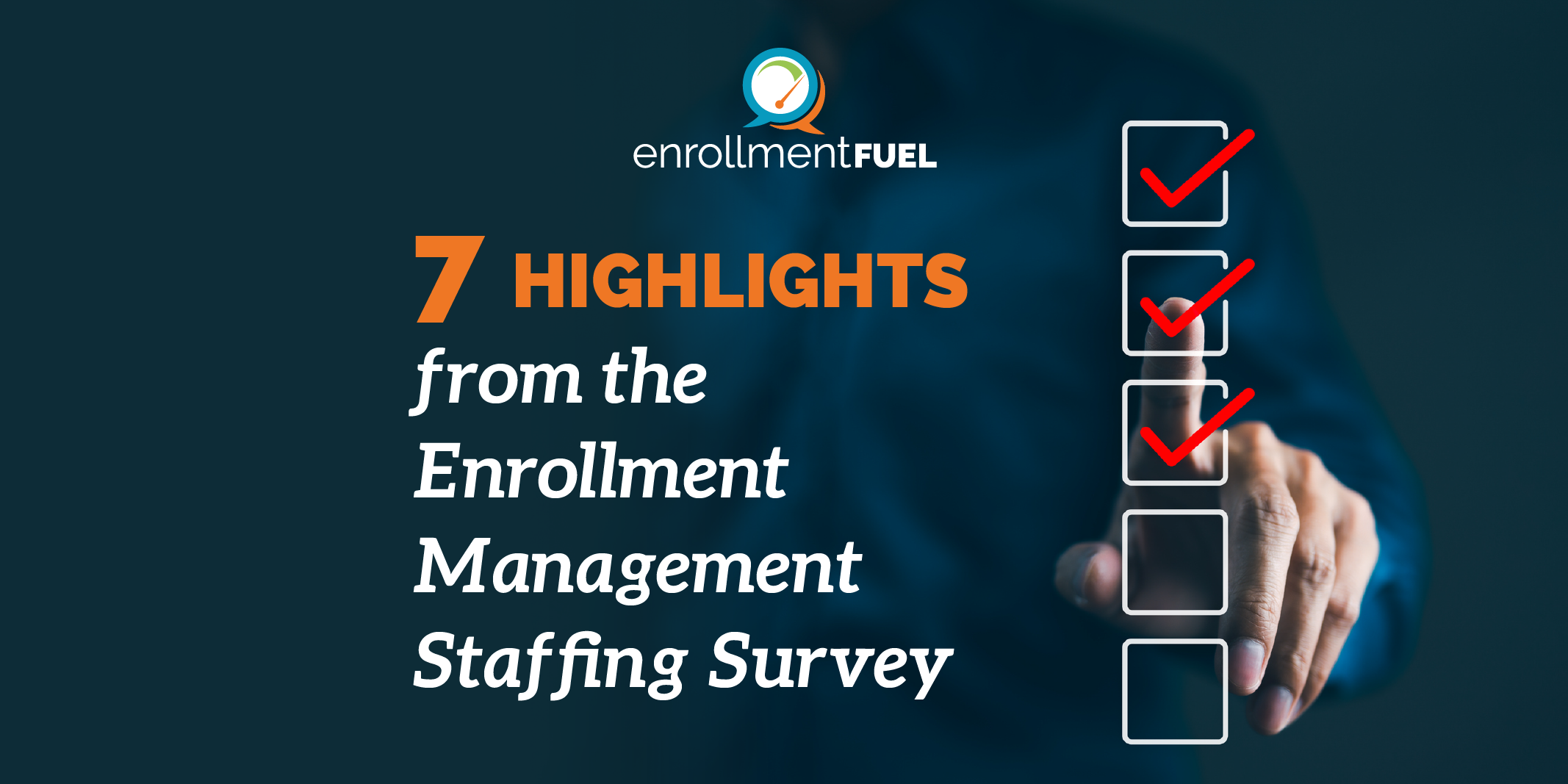Student loan forgiveness has been a hot topic of conversation. It’s no wonder, given the announcement released by President Biden, Vice President Harris, and the U.S. Department of Education as part of the Student Debt Relief Plan. Yet, even with the amount of information available, the details can get somewhat convoluted and confusing. For instance, what do you do when you receive a phone call from a third-party debt relief service promising to lower your monthly payment? Tempting offer, is it not? Yet, after only a few minutes on the phone, you’d find that you have to pay for the “opportunity” to access their supposed debt relief program, something that is actually accessible for free to all federal student loan borrowers.
Higher ed student loan forgiveness & the student debt relief plan
This is precisely what happened recently to Dr. Jacquelyn D. Elliott, enrollmentFUEL’s president, and to me. We are both blessed to have sufficient experience and knowledge to quickly recognize a scam, but that may not be the case for many young professionals. Third-party debt relief companies have become increasingly popular among student loan borrowers. Since the announcement of President Biden’s Student Loan Forgiveness Program, these third-party companies have taken advantage of the opportunity to make money from student loan borrowers.
I wanted to take a few moments to shed more light on the topic: let’s talk debt relief programs, options, and ways to access them for free. You see, the federal government supplies a free process to students for servicing their student loans, yet borrowers often use a pay-for-service student loan provider as an alternative. These programs can charge hundreds or thousands of dollars in sign-up and monthly maintenance fees for programs ALL federal student loan borrowers have access to with no fees.
What should you do when you receive calls offering student loan forgiveness?
- Ask them how they are affiliated with the U.S. Department of Education. If they do not provide a good answer, or any answer at all, discontinue the conversation immediately.
- Never provide your Federal Student Aid ID (FSA ID) or federal student aid log-in information to anyone, ever.
- If you’re having difficulty making your student loan payments, you have options. Contact YOUR student loan servicers. If you’re having trouble finding your student loan servicers’ information, contact your school’s financial aid office.
- Only talk to your school OR your student loan servicers regarding your federal student loans.
- There are already a variety of repayment plans available for students. See the information below—there may be a suitable plan waiting for you!
We are all likely to fall for a scam phone call when we do not have sufficient information on a subject. For that reason, we have summarized some useful information regarding the Loan Forgiveness Program and the upcoming changes, as well as some other things anyone in higher education should know about it. Feel free to use the information below both for personal benefit and as you continue working with students on an everyday basis.
What is the Student Loan Forgiveness Program?
The Student Loan Forgiveness Program is pretty much what it sounds like: the chance to have a portion of one’s federal student loans forgiven, if the borrower meets certain requirements. There are a few key elements to the new Student Loan Forgiveness Program as it currently stands:
- There will be a one-time final extension of the federal student loan repayment pause, originally introduced as a result of COVID-19. Federal student loan payments will resume in January 2023.
- Additional student loan debt relief will be offered to low and middle-income families. Up to $20,000 of debt cancellation will be available for federal Pell Grant recipients, while non-Pell Grant recipients could be eligible for up to $10,000 in debt cancellation on federal student loans. Borrowers will be eligible for the relief if their individual income is less than $125,000 per year or their household income is less than $250,000 per year. Public service loan forgiveness is still an available option for those who may be eligible.
- Although there have been long-standing income-based repayment plans available for students, an additional repayment plan is being offered to low and middle-income families to substantially reduce future monthly payments for those borrowers.
According to studentaid.gov, this new repayment plan would:
- Require borrowers to pay no more than 5% of their discretionary monthly income on undergraduate loans. This is down from the 10% available under the most recent income-driven repayment plan.
- Raise the amount of income that is considered non-discretionary income and therefore protected from repayment, guaranteeing that no borrower earning under 225% of the federal poverty level—about the annual equivalent of a $15 per hour minimum wage for a single borrower—will have to make a monthly payment.
- Forgive loan balances after ten years of on-time payments, instead of 20 years, for borrowers with loan balances of $12,000 or less.
- Cover the borrower's unpaid monthly interest, so that unlike other existing income-driven repayment plans, no borrower's loan balance will grow as long as they make their monthly payments—even when that monthly payment is $0 because their income is low.
To find out more information, click here: Biden-Harris Administration’s Student Debt Relief Plan.
Different Types of Repayment Plans
Some borrowers may not know that there are multiple types of repayment plans already available. It’s important to understand what they are and which one best fits each person’s unique financial, personal, and professional circumstances.
While there is an additional income-driven repayment plan under the new program, as mentioned above, several repayment plan options currently exist. We’ve provided a brief overview of the different repayment plans below. More details on each plan can be found on the Repayment Plans web page of the Federal Student Aid website.
Standard repayment plan
- Payments are a fixed amount that ensures your loans are paid off within ten years (or within ten to 30 years for Consolidation Loans)
Graduated repayment plan
- Payments are lower at first and then increase, usually every two years, and are for an amount that will ensure your loans are paid off within ten years (or within ten to 30 years for Consolidation Loans).
Extended repayment plan
- Payments may be fixed or graduated and will ensure that your loans are paid off within 25 years.
Revised pay as you earn payment plan
- Your monthly payments will be 10% of your discretionary income.
- Any outstanding balance on your loan will be forgiven if you haven't repaid your loan in full after 20 years (if all loans were taken out for undergraduate study) or 25 years (if any loans were taken out for graduate or professional study).
- Initial “pay as you earn” plan is similar without the debt forgiveness
Income-based repayment plan
- Your monthly payments will be either 10% or 15% of your discretionary income (depending on when you received your first loans), but never more than you would have paid under the ten-year Standard Repayment Plan.
- Any outstanding balance on your loan will be forgiven if you haven't repaid your loan in full after 20 years or 25 years, depending on when you received your first loans.
Income-contingent repayment plan
- Payments will be 20% of your discretionary income, or the amount you would pay on a repayment plan with a fixed payment over 12 years, adjusted according to your income.
- Any outstanding balance will be forgiven if you haven't repaid your loan in full after 25 years.
Income-sensitive repayment plan
- Your monthly payment is based on annual income, but your loan will be paid in full within 15 years.
For more information on student loans and student loan repayment programs, the National Association of Student Financial Aid Administrators (NASFAA) has a few articles full of great information. Check them out below:
Many student loan resources are available. Hopefully this article helps provide clarity on best practices for using those resources. Knowledge is powerful. Equip yourself with information and empower yourself, your students, and others in your life.
Related Articles
6 Benefits of a College Student Ambassador Program | enrollmentFUEL
Higher education enrollment management professionals and marketers often share a similar goal: How...
Give Your Counseling Staff a Boost: Hiring Current Students to Offset Staffing Shortages
We’ve talked about it for months, but the need for these conversations hasn’t subsided: the Great...
Student Search Campaign Tips | Higher Ed | enrollmentFUEL
Timely execution is critical for the success of any campaign. When it comes to launching a Student...




